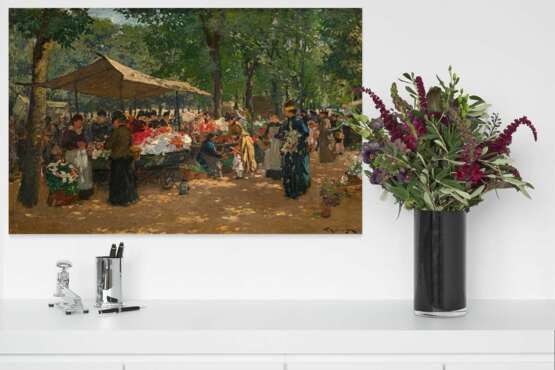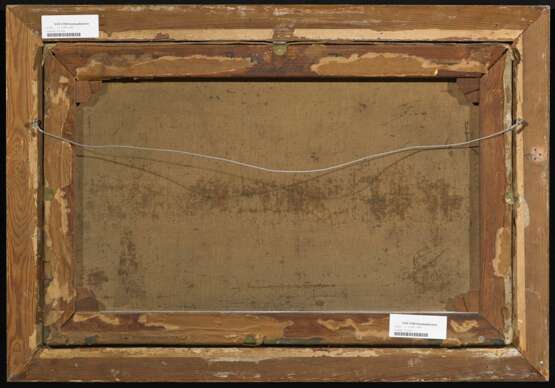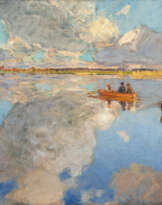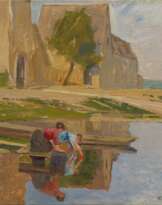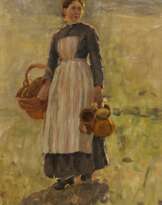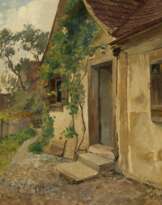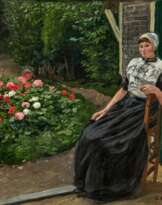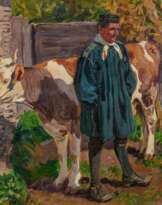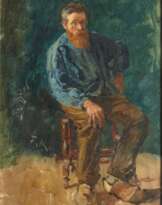Friedrich Kallmorgen. Der Blumenmarkt in Karlsruhe (Flower Market in Karlsruhe)
17.11.2023 15:00UTC +01:00
Classic
Prix de départ
25000EUR € 25 000
| Auctioneer | VAN HAM Kunstauktionen GmbH |
|---|---|
| Lieu de l'événement | Allemagne, Köln |
| Commission | 32% |
Archive
La vente aux enchères est terminée. Vous ne pouvez plus enchérir.

ID 1072531
Lot 1358 | Friedrich Kallmorgen. Der Blumenmarkt in Karlsruhe (Flower Market in Karlsruhe)
Valeur estimée
€ 25 000 – 35 000
Title: "Der Blumenmarkt in Karlsruhe" (Flower Market in Karlsruhe).
Technique: Oil on canvas.
Measurement: 46.5 x 73.5cm.
Notation: Signed and dated lower right: Fr. Kallmorgen 1887 (date painted over).
Frame: Framed.
Literature:
Irene Eder: Friedrich Kallmorgen. Monographie und Werkverzeichnis der Gemälde und Druckgraphik, Karlsruhe 1991, cat. rais. no. G.125.
Provenance:
Private ownership, Germany, 1950 - 2017;
Private ownership, Switzerland, since 2017.
Born in 1856 in Hamburg-Altona, which was still Danish at the time, as the son of a master builder, Friedrich Kallmorgen received his first drawing lessons from his uncle, the painter Theodor Kuchel, at the age of six. After four years of lessons at the arts and crafts school in Altona, he resisted his father's wish to pursue a career as an architect. Kallmorgen quickly decided to become a painter and in 1875 entered the Düsseldorf Academy, the leading teaching institution for landscape painting at the time. Initially he studied with Andreas Müller and Ernst Degner, but already in the following year he switched to the landscape class of Eugen Dücker.
After a study trip with C. F. Lessing, Friedrich Kallmorgen transferred in 1877 to the Academy of Arts in Karlsruhe, another centre of open-air painting, to study first in the landscape class with Ernst Hildebrand and later with Hans Frederik Gude. Another study trip takes the painter to Blankenburg am Harz and to the Lüneburg Heath. After a short stay in Berlin Kallmorgen returned to Karlsruhe and continued his studies with Gustav Schönleber.
At the beginning of the 1880s, he went on further study trips to northern Germany, Holland, France and Belgium, among other places, and his pronounced love of travel continued until the end of his life. He was fascinated by the Netherlands. Painting utensils and a sketchpad were his constant companions to capture the impressions gained on his travels in oil studies. His main focus was on landscape and city impressions as well as scenes from everyday life. Detailed studies of ships, roofs, windmills and plants subsequently serve as the basis for his studio paintings. His oeuvre captivates through the impressions gained on his travels, especially through the skilful combination of genre and landscape depictions. Recurring and characteristic for his work are the sometimes very dissolved brushstrokes and the impressive use of colour.
In addition to his core métier, Friedrich Kallmorgen also devoted himself to art-political tasks. In 1889 the painter founded a rural artists' colony in Grötzingen, from which the secessionist Karlsruhe Artists' Association emerged in 1896. In the years between 1890 and 1900 he again undertook numerous trips abroad, among others to Paris, Brussels and Italy. In 1901 Kallmorgen was appointed teacher of the landscape class at the Berlin Art Academy, but he remained close to his native Baden until the end of his life.
The painter impressively depicts an everyday scene at the flower market in his adopted home of Karlsruhe. The scene is lined with treetops through which finely accentuated light reflections fall on the action. Light in the form of radiant spots seems to be the painting's leitmotif. The painter skilfully reproduces the impression with fine brushstrokes and a luminous variety of colours in red, yellow, green and white. The virtuoso treatment of light is particularly significant here, which is entirely in the tradition of the painter.
Here Kallmorgen effectively reproduces an everyday scene at the flower market in his adopted hometown of Karlsruhe. The scene is lined with treetops through which finely accentuated reflections of light fall on the action. Light in the form of radiant spots seems to be the painting's leitmotif. The painter skilfully reproduces the impression with fine brushstrokes and a luminous variety of colours in red, yellow, green and white. The virtuoso treatment of light is particularly significant here, which is entirely in the tradition of the painter.
In her catalogue raisonné, Irene Eder describes the present work as signed and dated 1887. However, this date now shimmers faintly under an overpainting which, as the restorers of the "Gruppe Köln" assure us, was applied later. The previous owner of the painting explained to us that in the 1990s he was temporarily resident in a non-European country whose regulations prohibited the import and export of older works of art. In order to avoid inconveniences, he felt compelled to have the dating made unrecognisable.
| Artiste: | Friedrich Kallmorgen (1856 - 1924) |
|---|---|
| Technique appliquée: | Huile |
| Catégorie maison de vente aux enchères: | Peinture 19ème siècle |
| Artiste: | Friedrich Kallmorgen (1856 - 1924) |
|---|---|
| Technique appliquée: | Huile |
| Catégorie maison de vente aux enchères: | Peinture 19ème siècle |
| Adresse de l'enchère |
VAN HAM Kunstauktionen GmbH Hitzelerstr. 2 50968 Köln Allemagne | ||||||||||||||
|---|---|---|---|---|---|---|---|---|---|---|---|---|---|---|---|
| Aperçu |
| ||||||||||||||
| Téléphone | +49 221 92586215 | ||||||||||||||
| Fax | +49 221 92 58 62 4 | ||||||||||||||
| Commission | 32% | ||||||||||||||
| Conditions d'utilisation | Conditions d'utilisation | ||||||||||||||
| Heures d'ouverture | Heures d'ouverture
|

